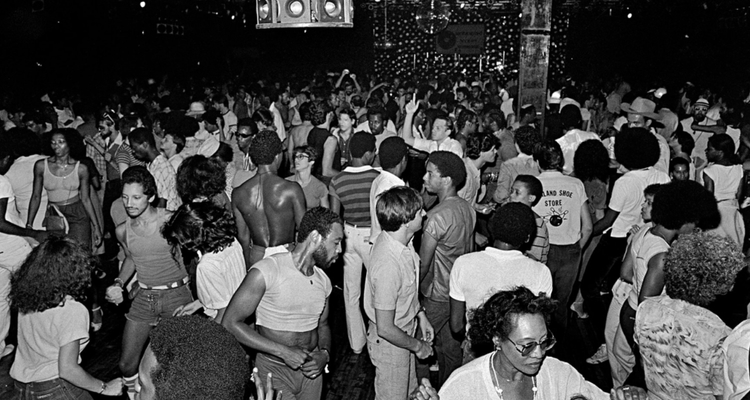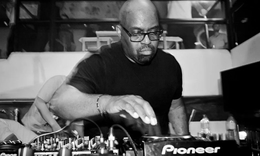
The History Of Dance Music
It takes only one look at the grandeur of today’s electronic music culture to see that dance music has never been bigger or more celebrated than it is now. The scale of its stadium-quivering events, the numerous dance-dominated charts and the hundreds of millions of ecstatic fans make it hard to imagine the times when dance music was nothing more than a small dot in a stubborn world that didn’t want to embrace change at first.
So how could something so small and initially insignificant have grown into a booming industry against the odds? And who so bravely put the pieces together, drastically changing the course of music evolution? Read on for an eventful roller coaster ride through the history of dance music.
DISCO MUSIC
There are so many moments that could be cited as the first steps of electronic music, from the launch of Robert Moog’s first commercial synthesizer in 1964 to the dub artists of Jamaica, who started overlapping multiple tracks on reel-to-reel audio tape recorders in the ‘60s to create a fresh offshoot of reggae. But all things considered, the one thing that truly kicked off club culture was disco.
It’s no mere coincidence that disco music is rooted deep in African-American music culture. Almost every style of popular music in the twentieth century started off as black dance music, from jazz and R&B to rock ‘n’ roll, funk, hip-hop and eventually techno and house. Perhaps more so than their Western counterparts, most non-Western cultures have long been inseparable from music. Dancing to the rhythm of the drums and vocal chants was an important part of rituals, as well as a form of expression nothing else could come close to. And when the United States officially did away with slavery in 1865, the descendants of the African peoples who were transported to the States over the course of multiple centuries started to influence the country’s main music culture.
Ultimately, Disco music came to see the light of day in the mid-1960s to celebrate newly won freedoms, especially those of gay people. And although disco wasn’t as inherently electronic as most dance music styles are today, it did provide the spark that shifted the record industry’s focus from radio to dance floors.

HOUSE MUSIC
Even though it shared a headspace with disco in terms of rhythm, intensity and danceability, house music started to take over when the world became fed up with disco near the end of the ‘70s. Visionaries such as Frankie Knuckles (who started mixing up a variety of musical styles at Chicago night club The Warehouse), Jesse Saunders and Farley Jackmaster Funk laid the foundations of house music, with Farley Jackmaster Funk’s cover of Isaac Hayes’ ‘Love Can’t Turn Around’ becoming the first international house hit.
Another figurehead of the first wave of house producers was Marshall Jefferson, whose style became synonymous with Chicago house. He tied the now trademark vocals, thumping piano and strings to the minimal, energetic rhythms whilst adopting a slightly faster tempo (bpm – beats per minute) than its New York counterpart. House music soon flourished across the United States, even more so when the demand for dance-floor-oriented tracks built a fire under the world of electronic equipment. By the mid-80s, the rise of drum machines, synthesizers and samplers had caused a whole world of new possibilities to open up, and house music thrived greatly in the slipstream of these technological developments.
TECHNO MUSIC
In another American city, the evolution of music took a different turn. A new, less conventional style of electronic music popped up in the late ‘80s, and it was aptly called “techno” to reference the technologically evolved city it originates from: Detroit. It came to reflect the underlying socio-economic differences within the city, as the oil crisis of the ‘70s caused many people to lose their jobs in Detroit’s automotive industry.
The ones who played a fundamental part in the rise of Detroit Techno were The Belleville Three: Juan Atkins, Derrick May and Kevin Saunderson. The high school friends, who were black students in a predominantly white neighborhood in the suburbs of Detroit, connected over a mutual love for sports and, most importantly, the new wave of synthesizer music coming from Europe. Their music became the soundtrack for the youths whose parents had been working side by side to secure a better future for the next generations until they lost their jobs.
After Juan Atkins set up his Metroplex label in 1985 and used it to send off his early techno hit ‘No Ufo’s’ under his Model 500 moniker, Derrick May followed suit with his Transmat label in 1986 and started releasing seminal techno tracks like ‘Nude Photo’ and ‘Strings Of Life’ as Rhythim Is Rhythim. Kevin Saunderson, who also garnered huge success later on as Inner City and E-Dancer, launched his label KMS (which stands for Kevin Maurice Saunderson) in 1987, and that label has been a massive presence in the world of techno to this day.

TRANCE MUSIC
In the early and mid-‘90s, after history shows a brief and localized surge of hardcore and “gabber” music coming from the Netherlands, trance music slowly crept to the surface as a minor sub genre within the house spectrum. It shared traits with house, techno, new age and synthesizer pop, of which the latter two gave it most of its dreamy ambience.
It wasn’t a tremendous success off the bat, mostly because there wasn’t enough new material being made to warrant complete trance sets or devoted trance nights. But that all changed when tracks from the likes of Robert Miles (‘Children’), BBE (‘Seven Days And One Week’) and Sash (‘Encore Une Fois’) transcended those limitations. As these records became huge club hits and crossed over into the mainstream charts, more and more producers began to deep-dive into the world of trance, helping the genre claim a spot alongside the other great dance music styles of that time.
Spurred onward by the melodic tendencies of Ferry Corsten, DJ Tiësto and later Armin van Buuren, trance music gradually developed into the newest dominant style of dance music. Armin van Buuren became the first of the three to fully exploit the reach of the Internet. His A State Of Trance radio show, which was launched in 2001 and remained a mostly national show for its first four years, suddenly rose to global importance when a U.K. company called Radio Department snatched up the show and started broadcasting it worldwide. The globalization of dance music, and in particular trance, proved a huge turning point.
A JUMP FORWARD
After the rise of trance, the evolution of dance music can be best described as a feedback loop. New dance music genres sprouted left and right, front and center, from hardstyle, progressive (house) and big room to drum ‘n’ bass, dubstep and pretty much every spinoff of a main genre that comes to mind. And as more and more flavors of electronically produced music tickled the taste buds of so many people across the globe, the dance music industry saw this incredible window of opportunity for what it was: a way to break the dwindling supremacy of the more traditional styles of music and build an empire of their own.
In the past ten to twenty years or so, the rise of dance music has proven to be consistently meteoric and self-amplifying. Dance music’s most prominent artists now sell out stadium shows in a heartbeat, initially small labels have become premier world brands and the long-outdated views on music consumption got swept along with the tide. And as the industry continues to innovate off the back of more technological advancement, the circle is drawn to completion.
Dance music is taking all the steps to continue its streak of dominance. But in the end, no one can tell what the industry will look like in ten, twenty or thirty years from now. One thing is for certain though. Against all the odds and in spite of the belittling grins of its early-day skeptics, dance music has managed to become a major force in the world of music. And thanks to the brave individuals that pushed onward against the stream and made their dreams reality, dance music now stands tall and proud like an electronic giant.
Source list
- How The Netherlands Took The Lead In Electronic Music Culture – Mark van Bergen
- Mary Go Wild – Gert van Veen, Arne van Terphoven
- Last Night A DJ Saved My Life, The History Of The Disc Jockey – Bill Brewster, Frank Broughton
- This Is Our House: House Music, Cultural Spaces, And Technologies – Hillegonda C. Rietveld
- The Underground Is Massive. How Electronic Dance Music Conquered America – Michaelangelo Matos
- Energy Flash: A Journey Through Rave Music and Dance Culture – Simon Reynolds
- Generation Ecstasy: Into the World of Techno and Rave Culture – Simon Reynolds
Header image credits
© Bill Bernstein - https://www.billbernstein.com/...

